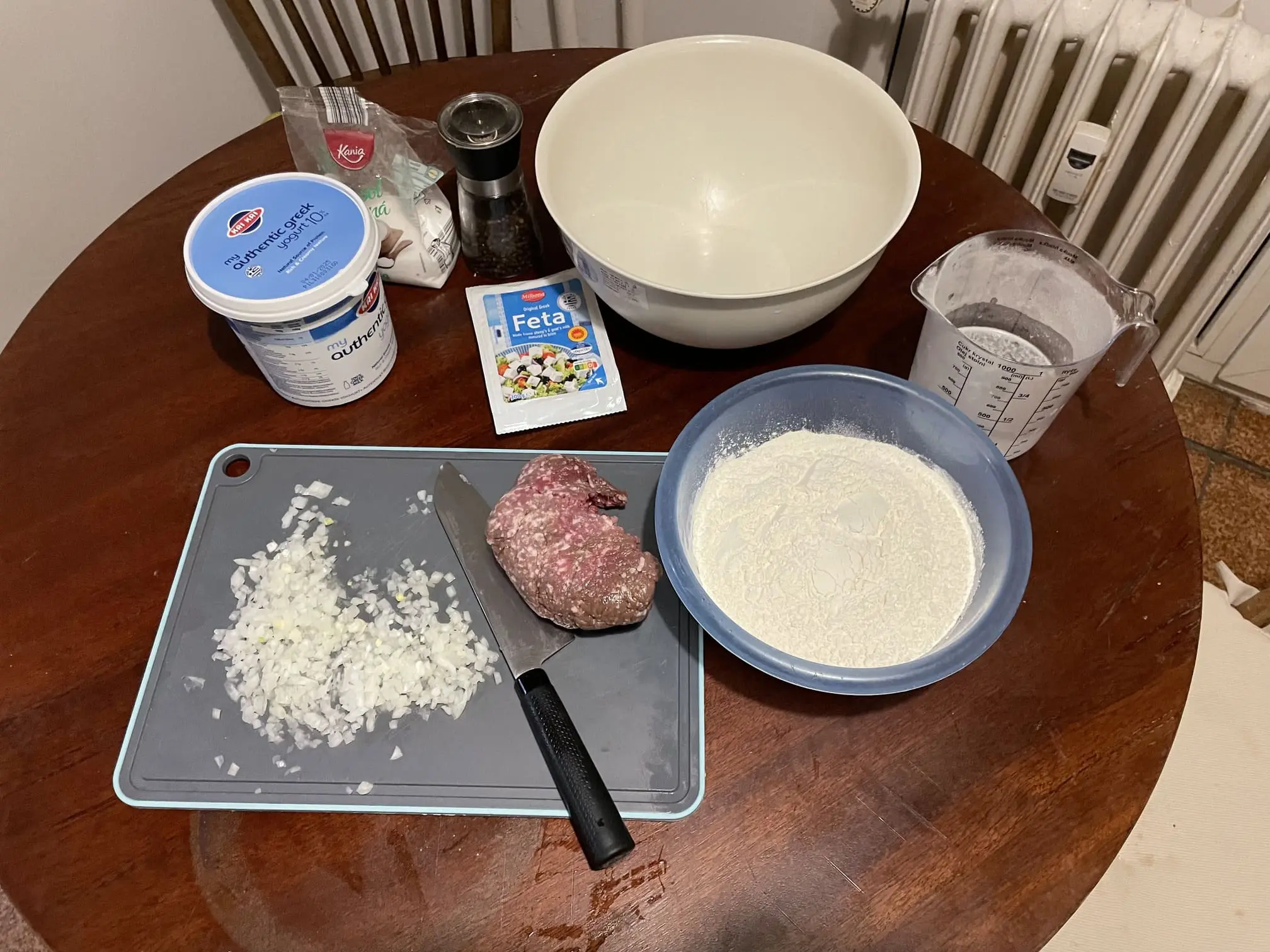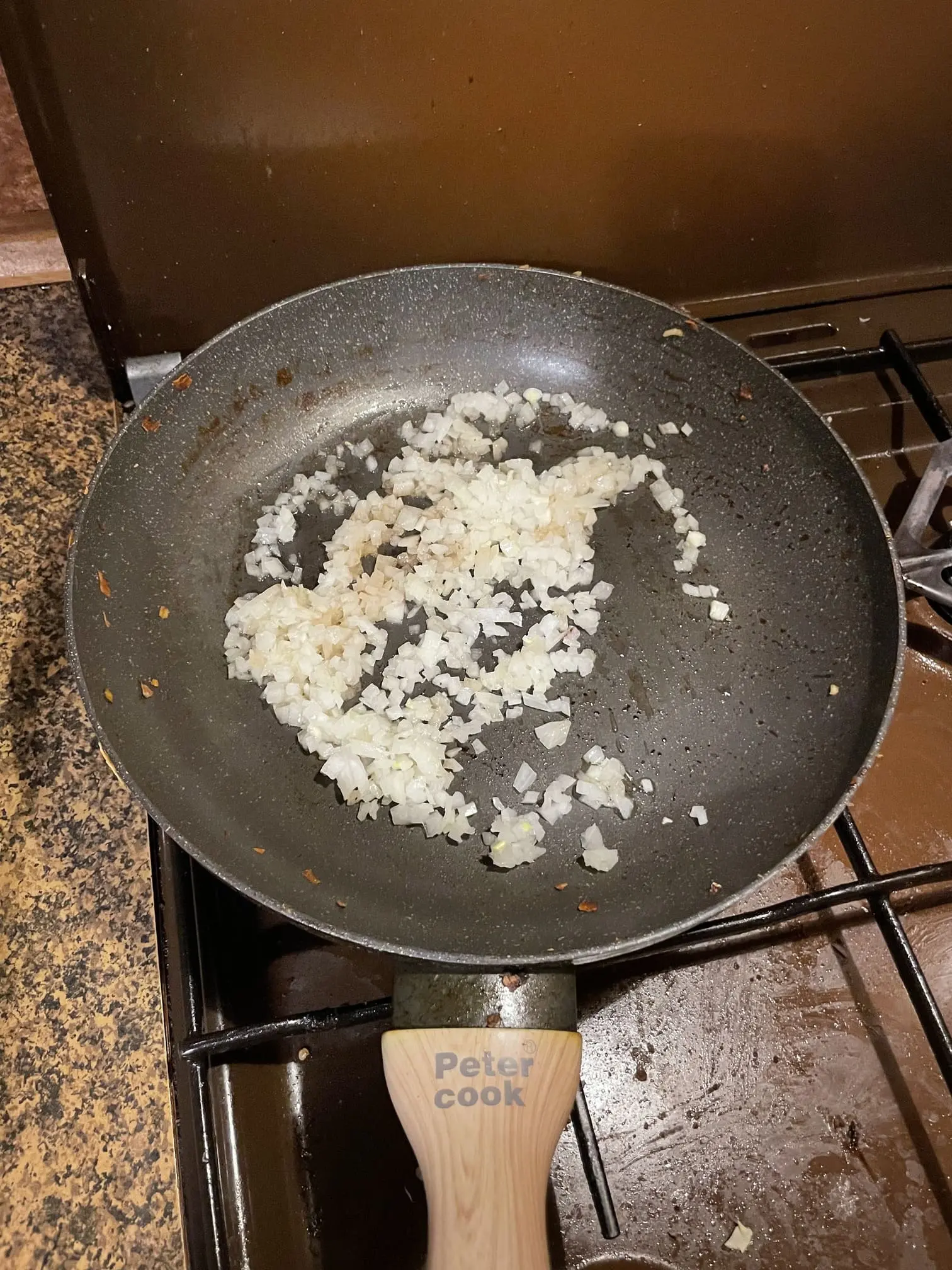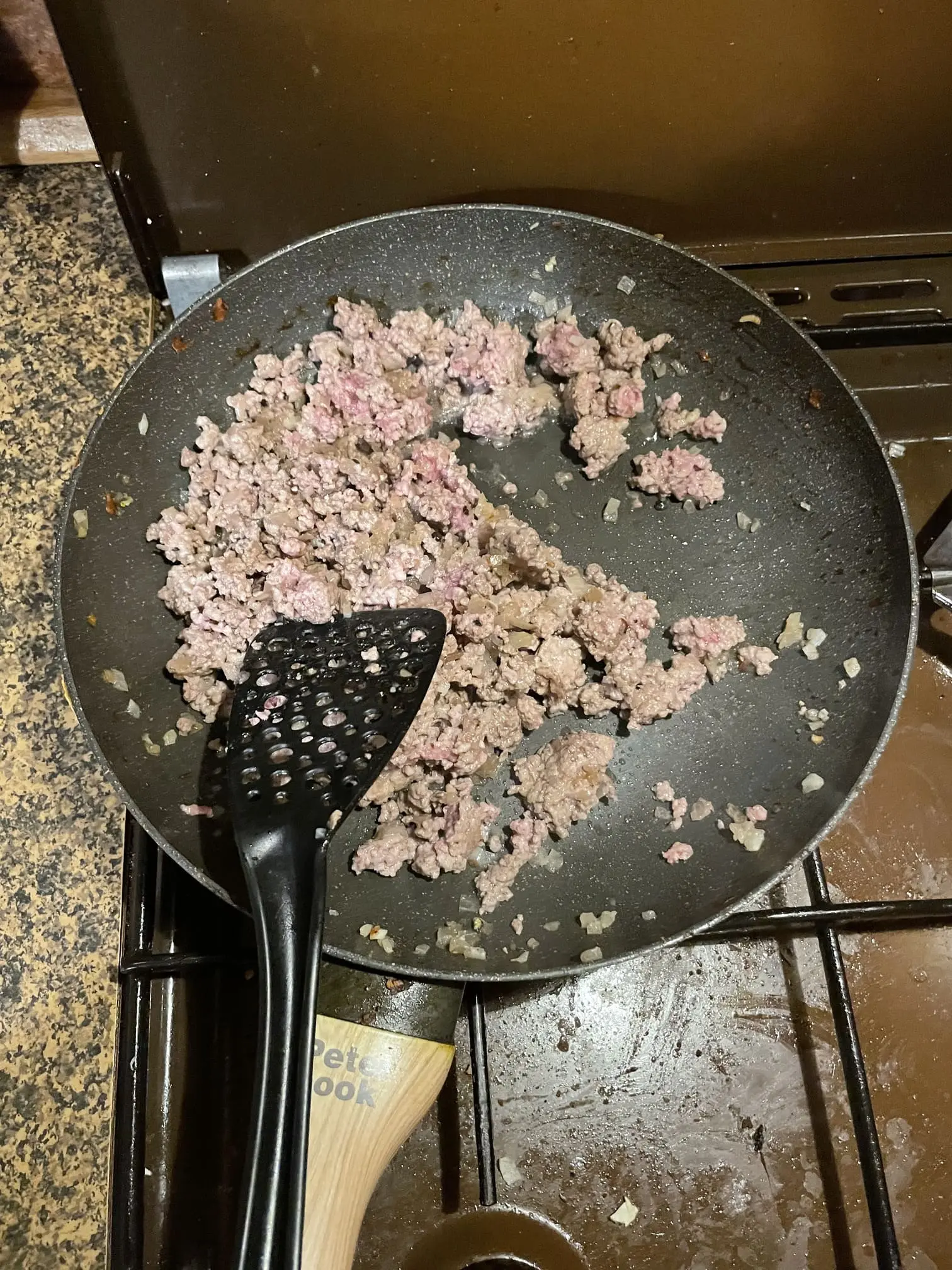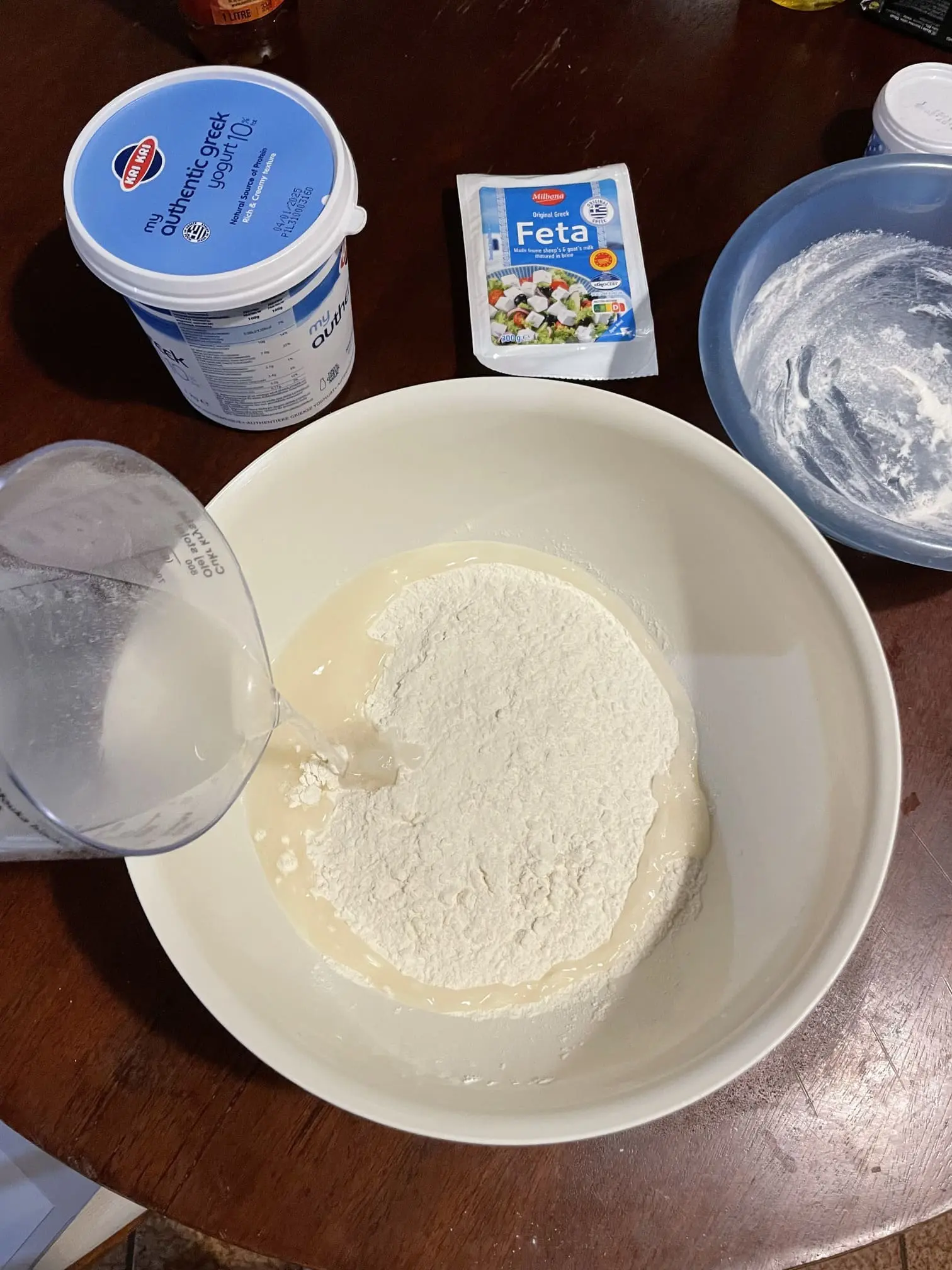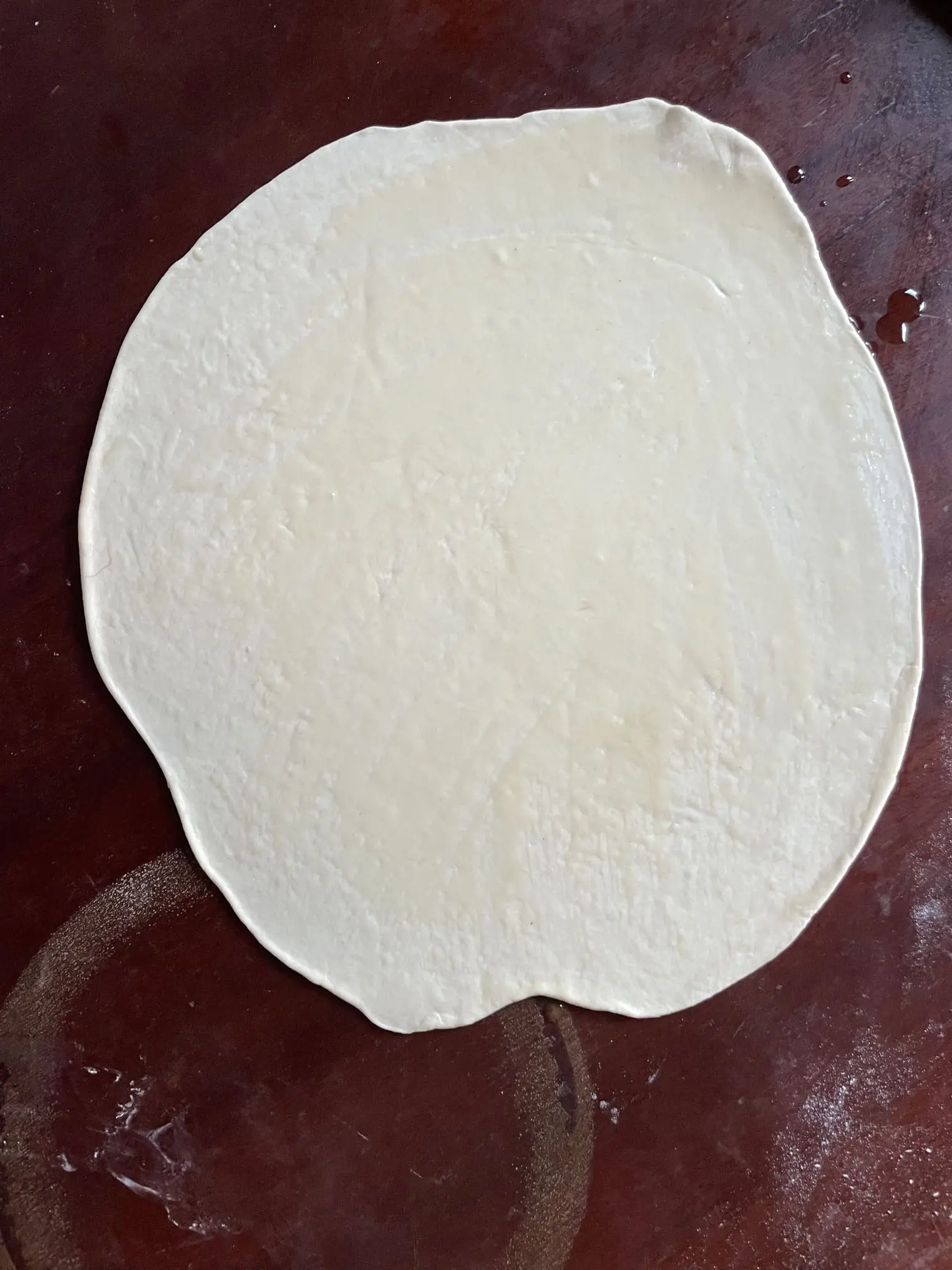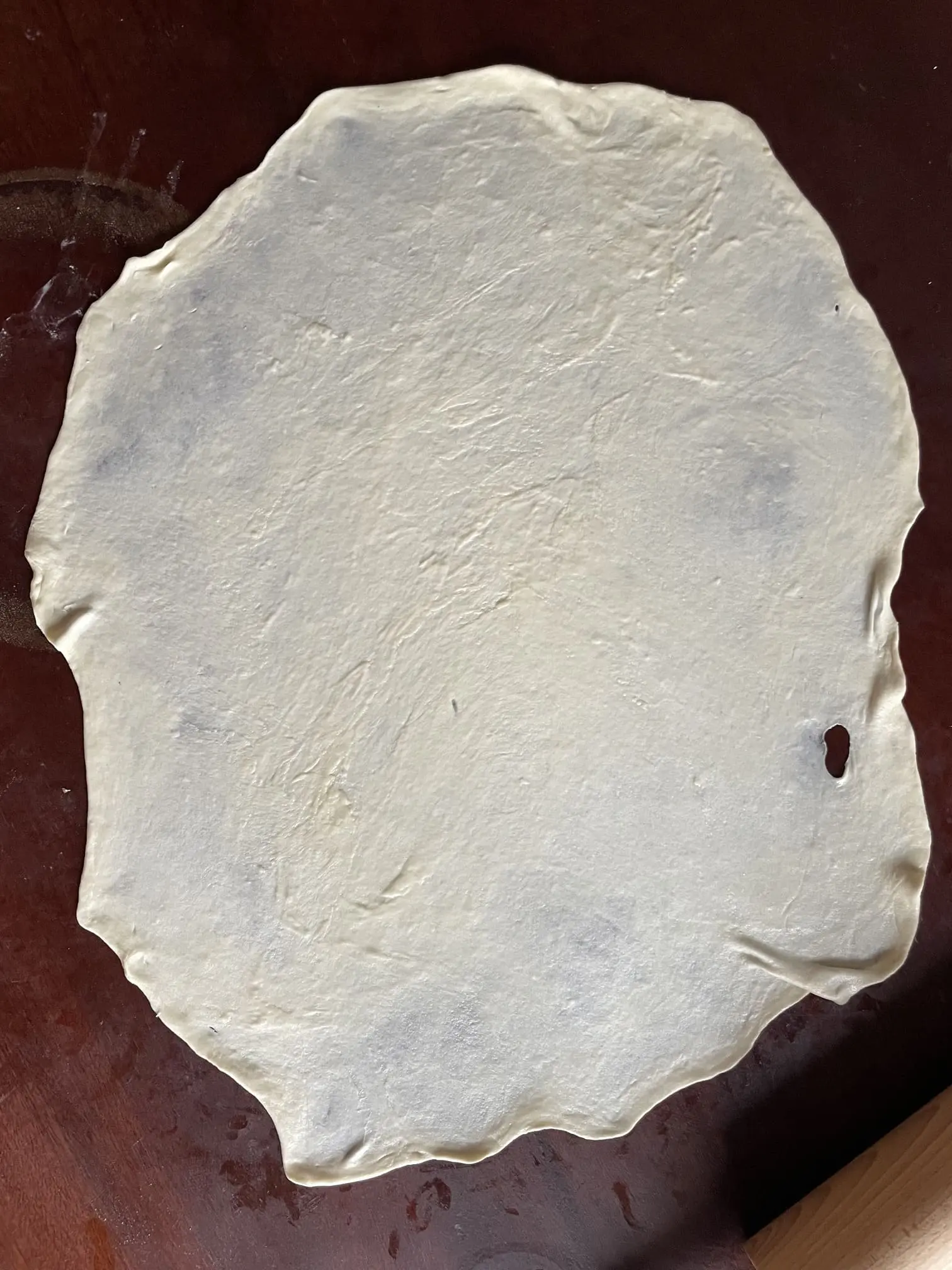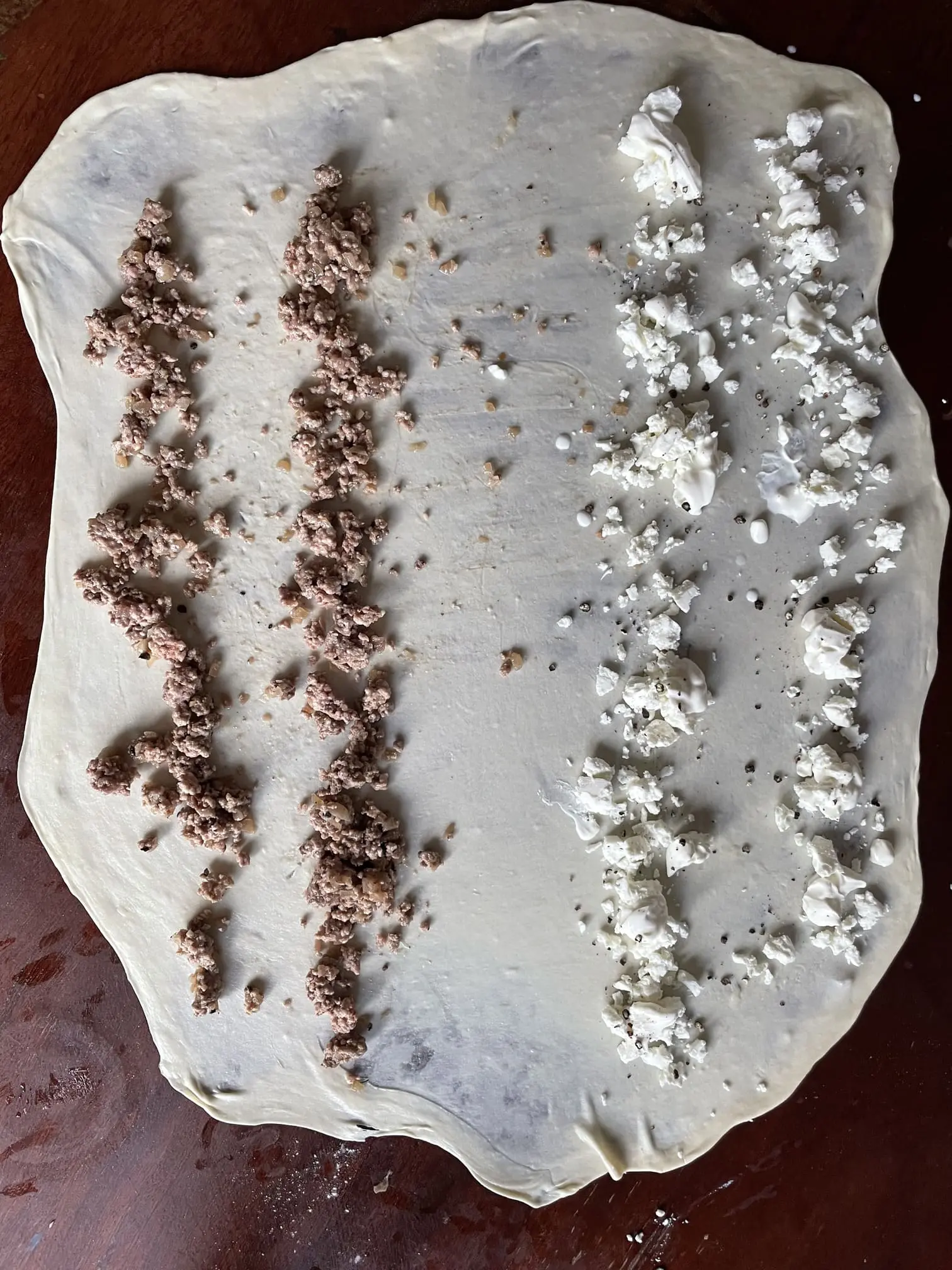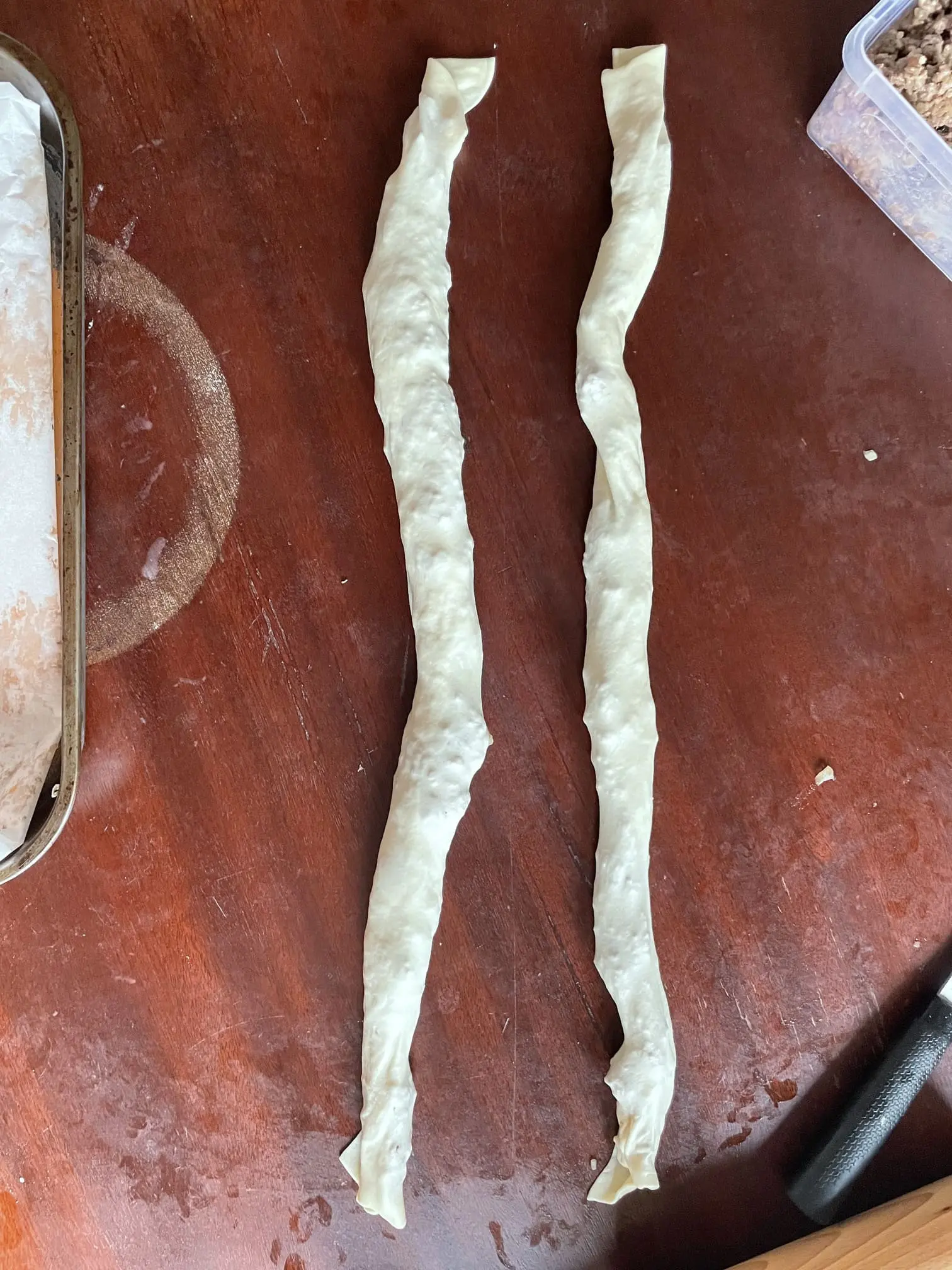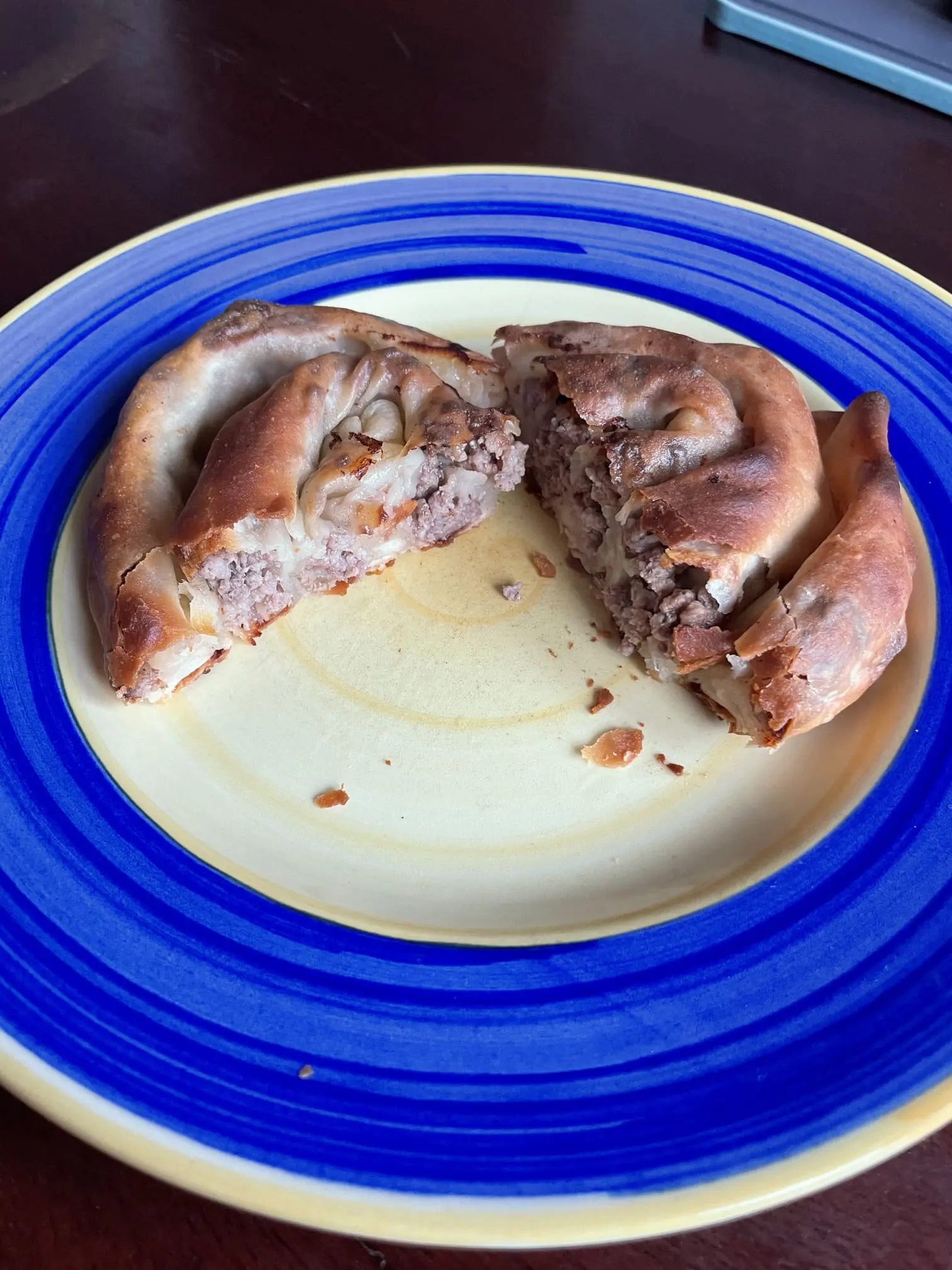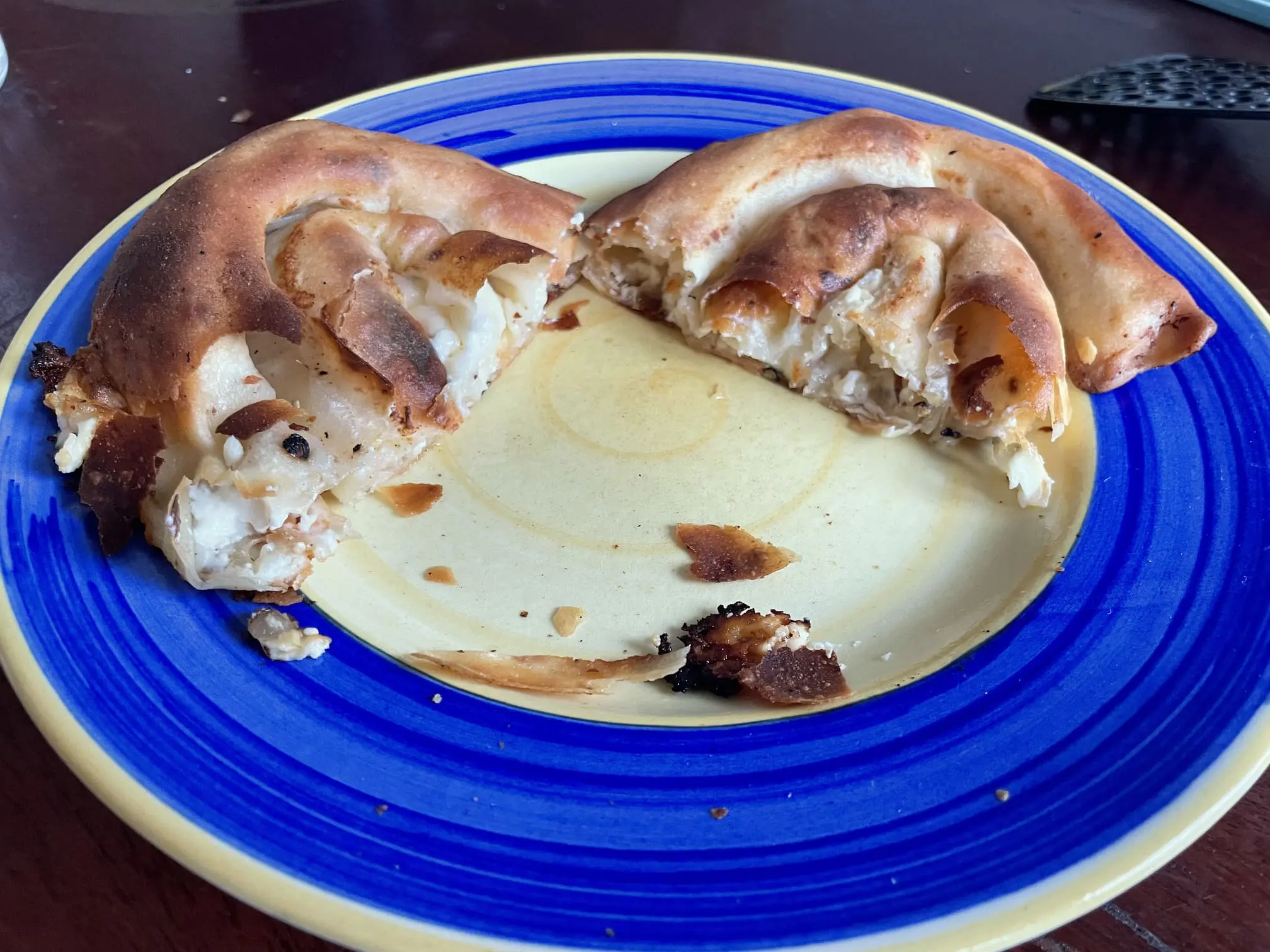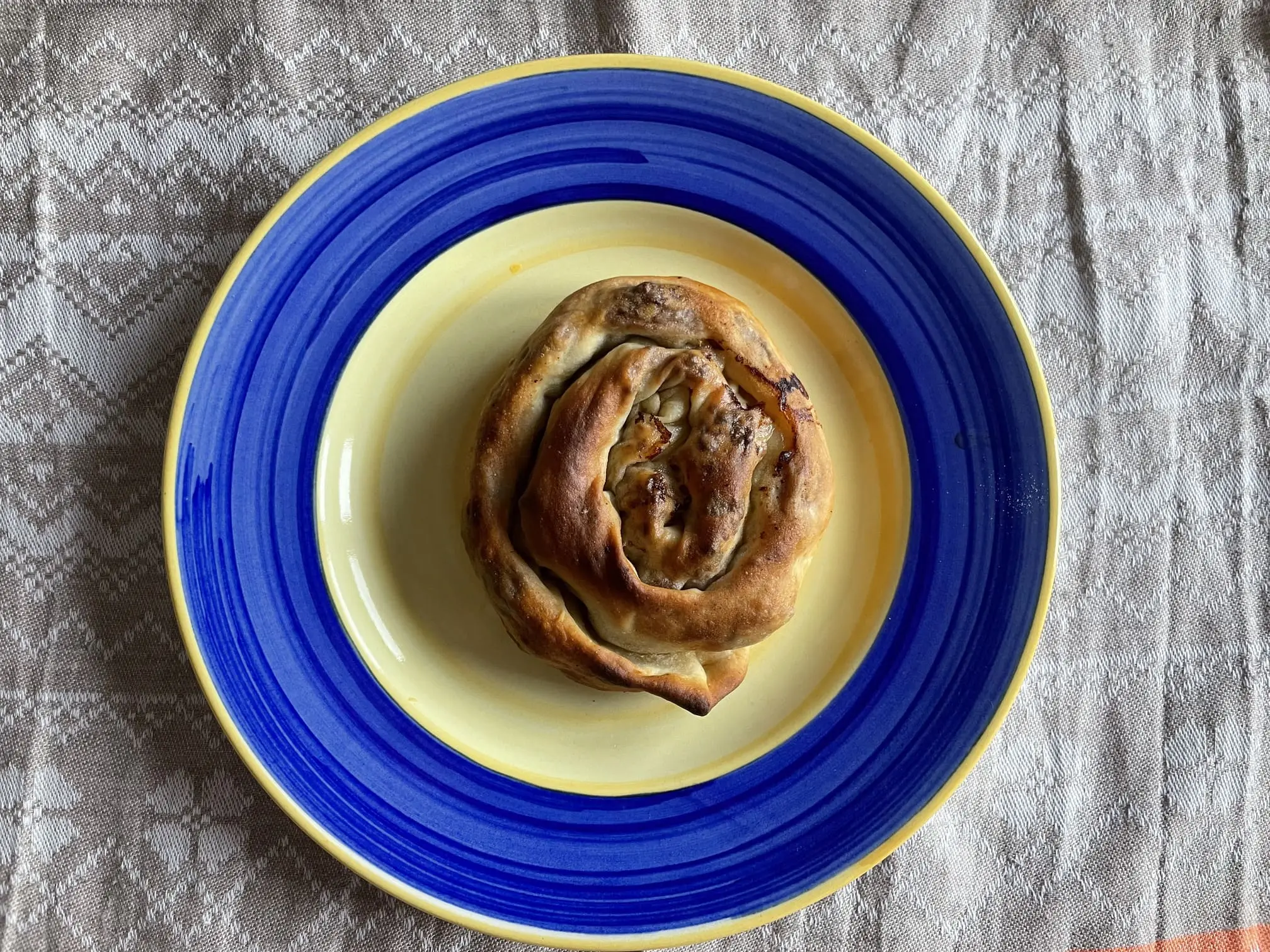Burek is a beloved bakery treat from the Balkans, inspired by Ottoman cuisine during the time of their occupation in the region. It is a shared culinary heritage among all the countries of the Southern Slavic world.
My story with burek is quite simple: it was my go-to choice for bakery stops during my cycling trip through the Balkans. A hearty dose of calories with simple yet incredibly flavorful ingredients! If you ever find yourself in the Balkans, don’t hesitate—go for it.
Just talking about it makes my mouth water and fills me with nostalgia for those carb-loaded moments of comfort—stopping at a pekara before climbing a mountain pass in Montenegro or fueling up for long days in the flatlands of Vojvodina, Serbia. What a pleasure!
Burek comes in different varieties: the classic meat-filled version, vegetarian options with cheese, or even a spinach-and-cheese combination. The battle for the most popular version is usually between the cheese and ground meat burek. But honestly, all variations are incredibly tasty—I love them all, and you can’t go wrong.
Enough talk, let’s get to the recipe for four delicious bureks:

Burek
Ingredients
Burek Dough:
- Flour: 500g all-purpose wheat flour (Type T45 or T55 in France, or fine pastry flour, hladka in Slovakia)
- Lukewarm water: 250-300ml
- Salt: 1 teaspoon
- Vegetable oil: 3 tablespoons (sunflower or olive oil)
- Butter
- White vinegar: 1 tablespoon (optional, to make the dough more elastic)
Burek Filling:
- Meat Version:
- Ground meat (beef or pork or lamb if you wanna go fancy): 300 g
- 1 finely chopped onion
- Salt and pepper to taste
- Paprika or mild chili powder: 1 teaspoon
- Oil: 1 tablespoon
- Vegetarian/Cheese Version:
-
- Crumbled feta or fresh cheese: 250g
- Plain yogurt or cottage cheese: 2 tablespoons
- Optional: Fresh herbs (thyme/rosemary) or finely chopped fresh parsley (1 handful)
Instructions
1. Prepare the dough
- In a large bowl, mix the flour and salt.
- Gradually add lukewarm water while kneading until you obtain a smooth and elastic dough.
- Incorporate the oil (and vinegar, if using) and continue kneading for 5-10 minutes. The dough should be stretchy but not sticky.
- Divide the dough into 4 balls, lightly coat them with oil, cover with plastic wrap or a clean cloth, and let them rest for 30 minutes to 1 hour.
2. Prepare the filling
- For the meat filling, there are two approaches:
- Raw filling: Simply mix all ingredients. The meat will cook in the oven, but you’ll need to monitor it carefully.
- Pre-cooked filling: Sauté the onion in a little oil until translucent, then add the ground meat. Season with salt, pepper, and paprika. Cook until lightly browned but not fully done (to avoid drying out). Let cool before using.
- Personally, I found the pre-cooked version a bit dry, so I’ll try the raw version next time
- For the cheese filling, mix all ingredients in a bowl.
3. Roll out the dough
- On a lightly oiled surface, take one dough ball.
- Using a rolling pin, roll it into a thin circle. Gently stretch it with your hands until almost translucent (similar to phyllo dough). With experience, the "parachute" stretching technique can be effective. (Small tears are not a problem by the way, just not 10cm holes)
4. Fill and Roll
- Place 2-3 uneven lines of filling along one edge of the stretched dough.
- Carefully roll the dough over itself to enclose the filling, forming a long tube.
- Coil the tube into a spiral to create a round or elliptical shape (the traditional shape).
5. Baking
- Place the bureks on a baking sheet lined with parchment paper.
- Brush with oil and/or melted butter or an egg-and-milk mixture for a golden finish. (For extra crispiness, brush with oil/butter 2-3 times during baking.)
- Bake in a preheated oven at 200°C for 20-30 minutes, until golden and crispy.
Once your bureks have slightly cooled (though they’re best enjoyed warm or hot), let your taste buds travel to the heart of the Balkans. With each bite, you’ll feel transported between Belgrade, Kotor, and Sarajevo—perhaps even inspiring you to visit one day. Who knows?
Enjoy this crispy yet simple dish, a true hallmark of Balkan cuisine and its unique approach to food.
See you next time for more Eastern recipes!

